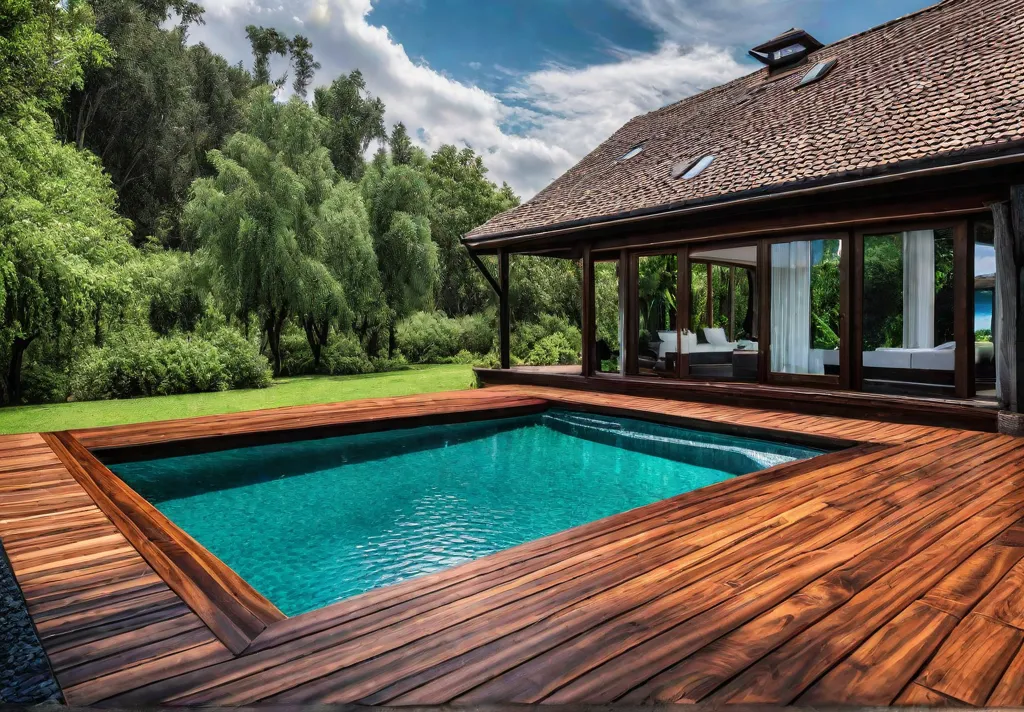As a lover of the great outdoors, I can’t imagine my home without a beautiful, functional deck. Whether hosting summer barbecues, relaxing with a good book, or simply enjoying the fresh air, a well-designed deck can transform your outdoor living experience. But with so many decking material options, choosing the right one for your home can feel overwhelming.
I’m excited to share this comprehensive guide to decking materials. We’ll explore the different wood, composite, and metal decking types, dive into the associated costs, and discuss the all-important maintenance requirements to keep your outdoor oasis looking its best for years. By the end, you’ll have all the information you need to create the perfect deck that suits your style, budget, and lifestyle.
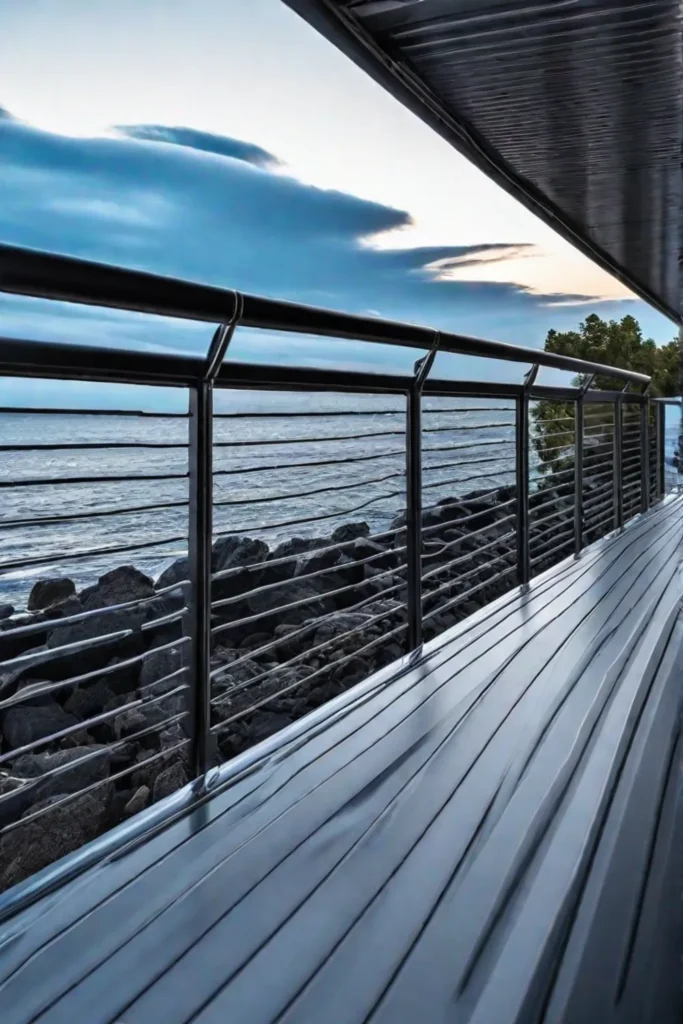
Types of Decking Materials
When it comes to decking materials, the options are quite diverse. Let’s start by taking a closer look at some of the most popular choices:
Wood Decking: Wood is a classic choice for decking, and several varieties exist. Pressure-treated lumber is an affordable and durable option with a natural look that can be stained or painted to your liking. For a more rustic vibe, you might prefer cedar or redwood’s warm tones and weather-resistant properties.
Composite Decking: Composite decking is made from recycled plastic and wood fibers, offering a low-maintenance alternative to traditional wood. These materials are designed to resist fading, staining, and damage from the elements. You can find composite decks in various colors and wood-like textures to complement your home’s style.
Aluminum Decking: Lightweight and corrosion-resistant, aluminum decking is durable and requires very little upkeep. While it may be a bit more expensive upfront, aluminum’s long-lasting durability can make it a wise investment in the long run.
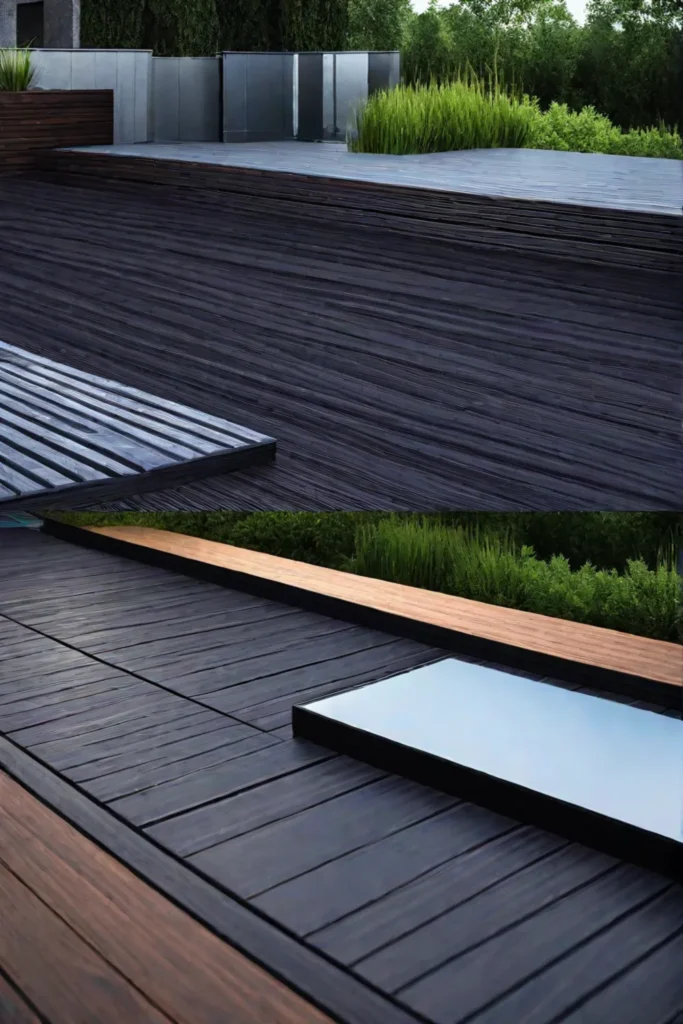
Concrete and Stone Decking: For a truly unique and modern look, consider concrete or stone decking. These materials offer exceptional strength and weather resistance, though they tend to be on the pricier side of the spectrum.
As you explore these options, consider your local climate, personal style preferences, and long-term maintenance requirements. The right decking material can make all the difference in creating an outdoor oasis you’ll love for years.
Decking Material Costs
Of course, budget is a crucial consideration when planning a decking project. Let’s take a closer look at the costs associated with various decking materials:
On average, you can expect to pay anywhere from $50 to $10 per square foot for composite decking, while hardwood decking can range from $4 to $15 per square foot. PVC decking typically falls in the $5 to $15 per square foot range, and pressure-treated wood comes in at a more budget-friendly $1 to $6 per square foot.
In addition to the material costs, you’ll also need to factor in labor and installation fees. Professional installation can run you between $3 and $20 per square foot, depending on the project’s complexity and location. Opting for a DIY approach can save labor costs, but you’ll need to account for the required tools and materials.
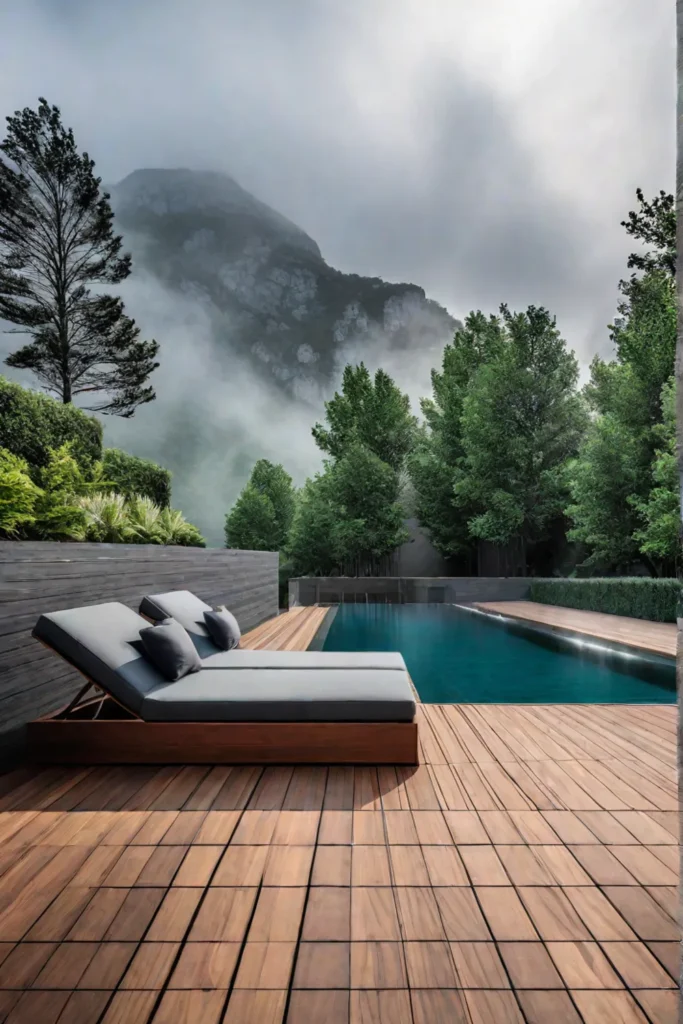
Your decking material’s long-term maintenance and replacement costs are also important considerations. Composite and PVC decking may have a higher upfront price tag but often require less maintenance and replacement over time than traditional wood.
To keep your decking project within budget, consider cost-effective materials like composite or pressure-treated wood and explore the potential savings of DIY installation. Don’t forget to factor in the long-term maintenance and replacement costs as well. With some planning and research, you can create the outdoor oasis of your dreams without breaking the bank.
Decking Maintenance and Longevity
Now that you’ve chosen the perfect decking material for your home, it’s time to discuss the all-important maintenance topic. Proper care and upkeep are essential for ensuring your deck looks its best and lasts for years.
Regular cleaning is a must, regardless of the decking material you choose. Sweep away debris, dirt, and leaves regularly, and give your deck a thorough cleaning with a mild detergent and water solution. Don’t forget to apply a sealant or waterproofing treatment annually to protect against the elements.
Staying on top of repairs is also key. Inspect your deck regularly for any loose nails or screws, damaged boards, or gaps that could allow water to seep in. Addressing these issues promptly can prevent them from turning into major problems down the line.
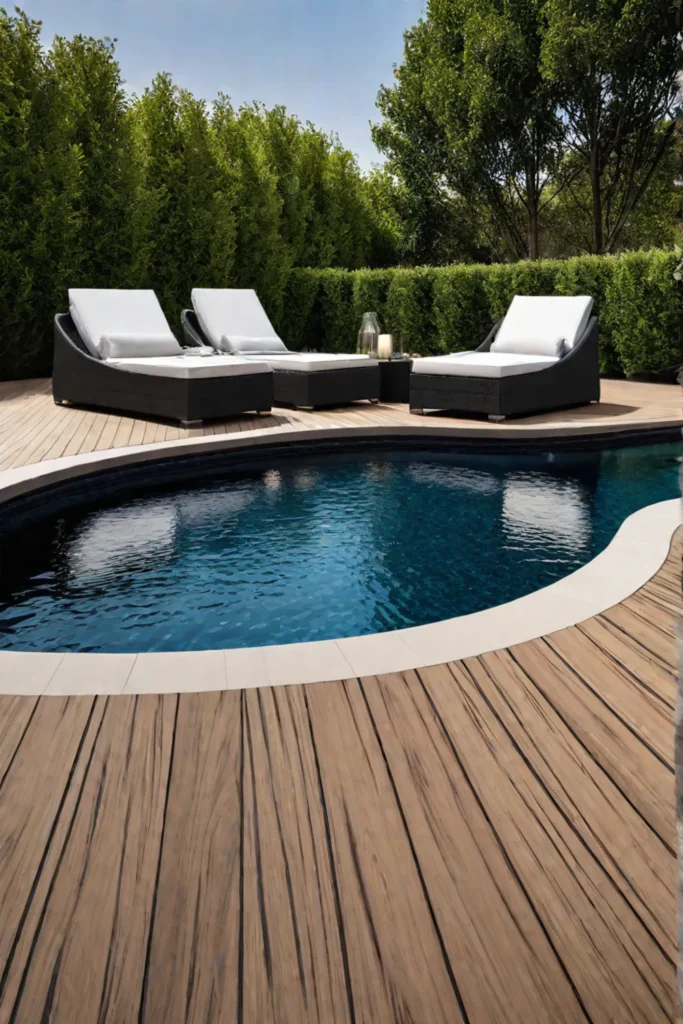
The lifespan of your decking will depend on various factors, including the weather conditions in your area, the amount of foot traffic, and the deck’s exposure to the elements. Factors like extreme temperatures, UV rays, and heavy rainfall can all take a toll over time.
Fortunately, recent advancements in decking materials have led to improved durability and low maintenance requirements. Composite and PVC decking, for example, are designed to resist fading, scratching, and weather-related damage, making them a great long-term investment.
By following a regular maintenance routine and looking for issues, you can ensure your deck remains in top-notch condition for years to come. Whether you have a wood, composite, or metal deck, a little TLC goes a long way in preserving its beauty and functionality.
Decking Aesthetics and Design
While functionality is certainly important, the aesthetic appeal of your deck is equally crucial. After all, this is an extension of your living space, and you want it to blend seamlessly with your home’s overall style.
The good news is that decking materials come in various colors, textures, and finishes to suit any design preference. Wood decking, for instance, offers a natural, rustic charm, with stains and paints allowing you to customize the look. Composite and PVC decking, on the other hand, can mimic the appearance of wood while providing a more uniform and modern aesthetic.
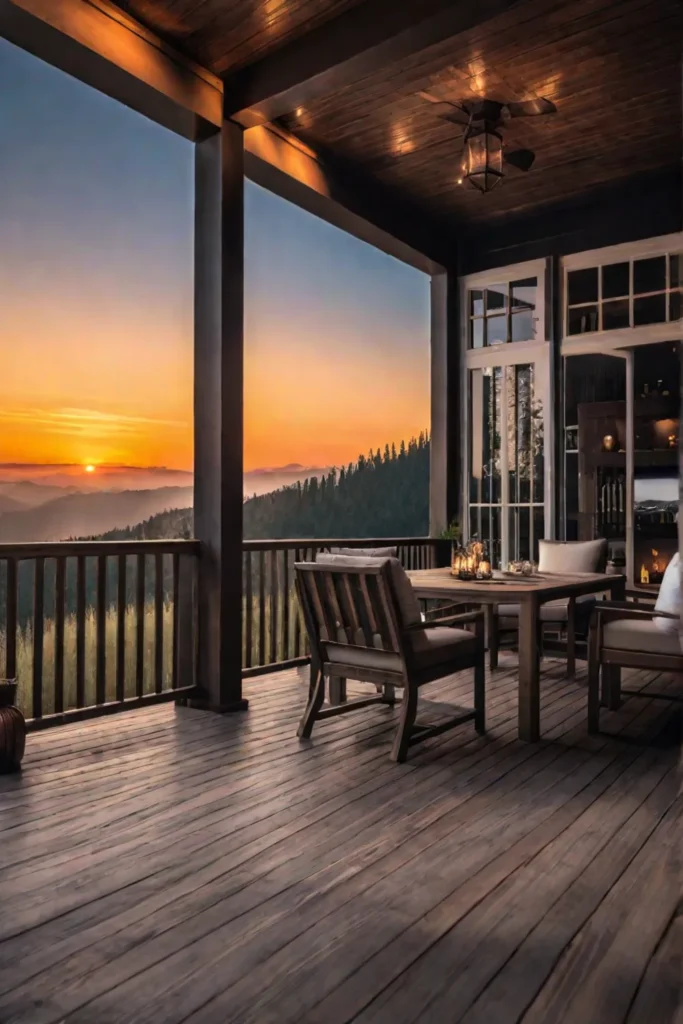
Integrating your deck with the surrounding landscape is another way to enhance its visual appeal. Complement your decking materials with coordinating outdoor furniture, lighting, and landscaping elements like plants and water features. This holistic approach will create a cohesive and visually stunning outdoor living space.
Don’t be afraid to get creative with your deck’s layout and design. Patterns like herringbone or diagonal designs can add visual interest, while multilevel configurations can define different areas for dining, lounging, and entertaining.
By carefully considering the aesthetics of your decking material and how it fits into the overall design of your outdoor space, you can transform a simple platform into a true showstopper that reflects your style.
Sustainability and Environmental Considerations
As homeowners become increasingly eco-conscious, the environmental impact of decking materials has become an important factor to consider. Fortunately, there are plenty of sustainable and environmentally friendly options available.
Look for decking made from recycled materials, such as reclaimed wood or recycled plastic and wood composites. These products often have a lower carbon footprint than traditional materials and help divert waste from landfills.
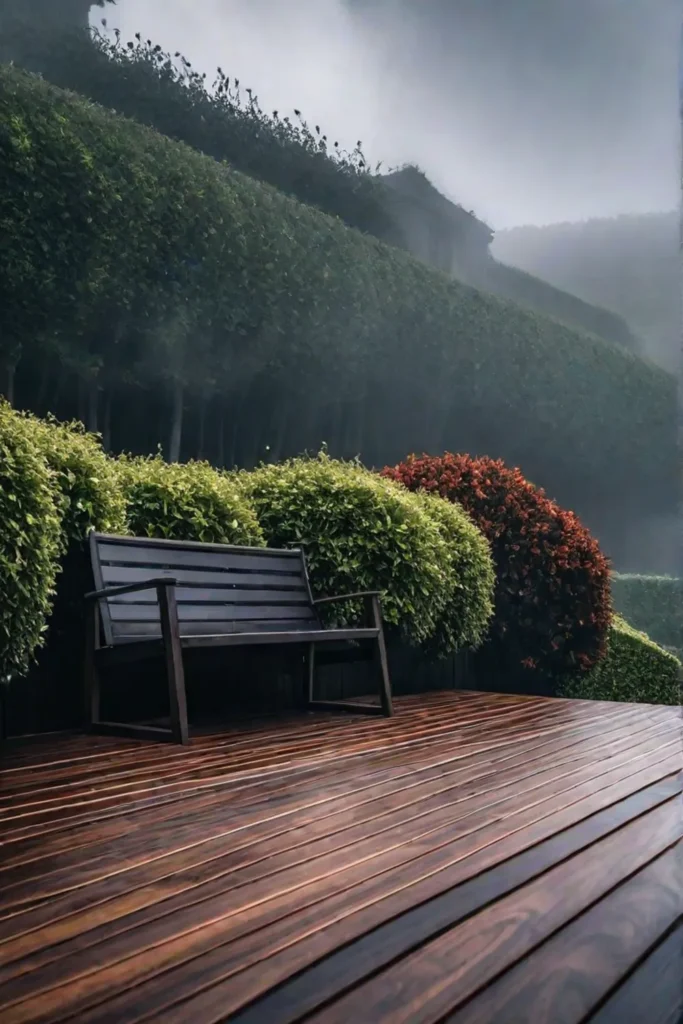
Renewable resources like bamboo are another excellent sustainable choice. Bamboo is a fast-growing grass that can be harvested without causing deforestation, making it a more eco-friendly alternative to hardwood.
When evaluating decking materials’ environmental impact, factors like the manufacturing process, transportation emissions, and the potential for recycling or biodegradability at the end of the deck’s lifespan should also be considered.
By choosing sustainable decking options and incorporating eco-friendly practices into your project, you can create an outdoor oasis that’s beautiful and kind to the planet. It’s a win-win for you and the environment.
Decking Safety and Accessibility
Safety and accessibility should be top priorities when designing your outdoor living space. After all, you want your deck to be a welcoming and inclusive area for family and friends of all abilities.
Slip-resistant decking materials are necessary, especially in high-traffic areas or near water features. Look for textured surfaces or coatings that provide extra traction, even when wet. Composite and PVC decking are often engineered with slip-resistant properties, making them a great choice for safety-conscious homeowners.
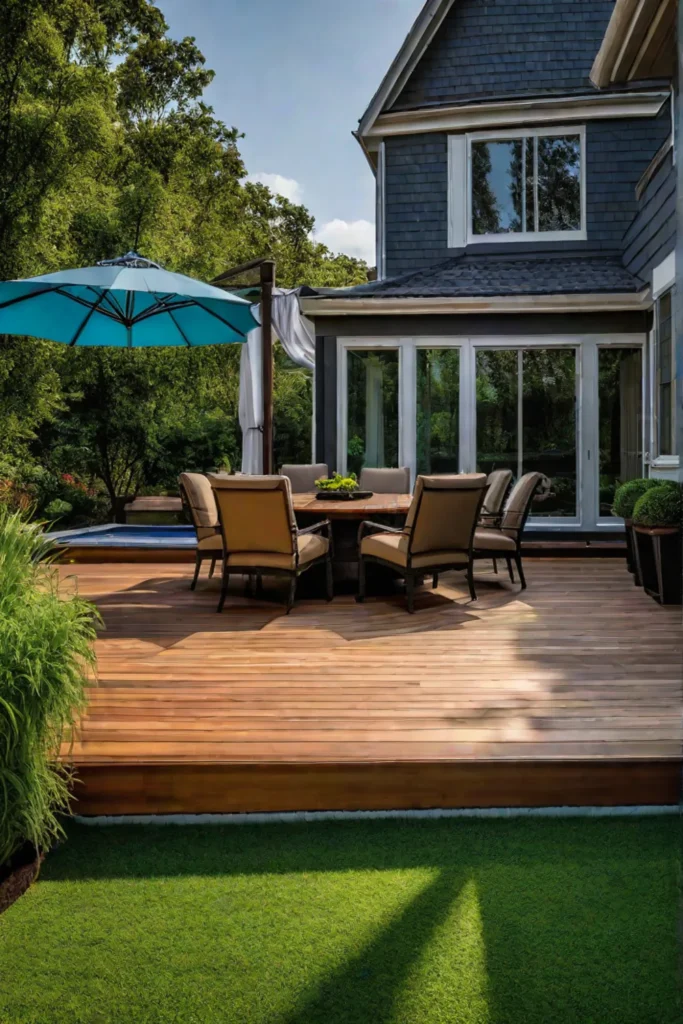
Incorporating accessibility features like ramps, handrails, and low-profile designs can also enhance the usability of your deck. These elements make the space more inclusive and provide added safety for those with mobility challenges.
It’s also important to stay up-to-date on local building codes and regulations regarding decking safety. Requirements for deck height, guardrail height, and stair dimensions can vary, so research and plan accordingly.
By prioritizing safety and accessibility in your decking design, you can create an outdoor living space that’s enjoyable and welcoming for everyone who steps onto it.
DIY Decking Installation and Repairs
For handy homeowners, tackling a decking project yourself can be an incredibly rewarding experience. Not only will you save on labor costs, but you’ll also gain a sense of pride and accomplishment in creating your outdoor oasis.
Regarding DIY decking, the key is to start with a solid plan. Assess your available space, budget, and personal style preferences to choose the right decking material. Then, familiarize yourself with the necessary tools and equipment and any local building codes or regulations.
Safety should always be your top priority when working on a DIY decking project. Wear the appropriate protective gear, follow proper installation techniques, and don’t hesitate to ask for help or guidance.
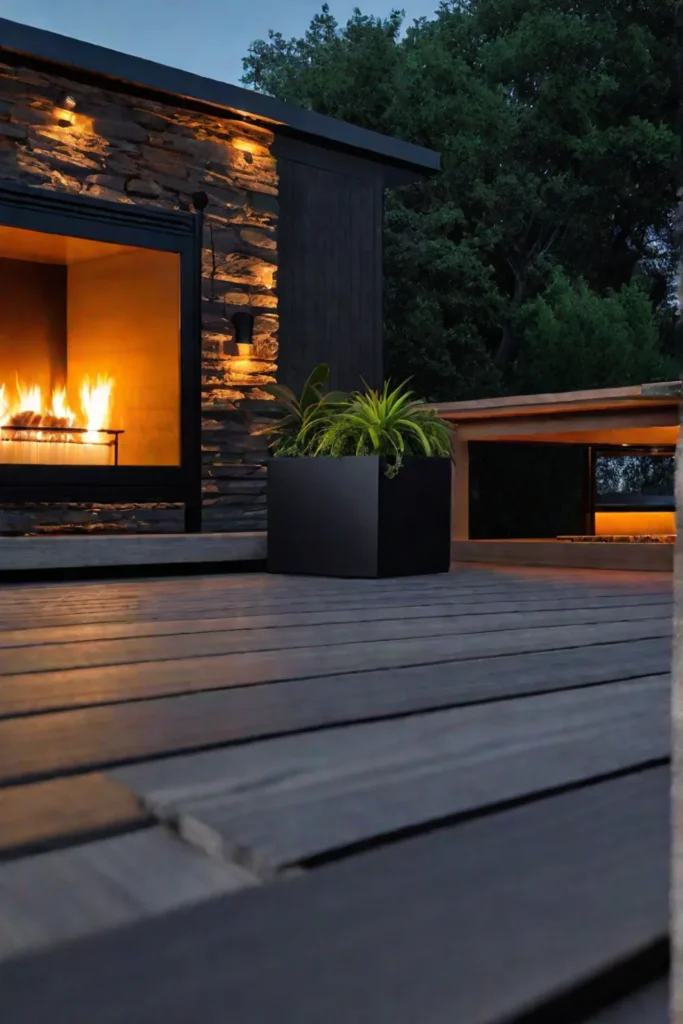
One of the best ways to make DIY decking more accessible is to break down the project into manageable steps. Focus on tackling one task at a time, whether laying the foundation, assembling the frame, or installing the decking boards. This approach can help even novice DIYers feel confident in completing the project.
Of course, even the most well-built deck will require maintenance and occasional repairs over time. Regularly inspecting your deck for loose boards, cracks, or other issues and addressing them promptly can help extend its lifespan and keep it looking its best.
With a little research, the right tools, and a willingness to learn, you can transform your outdoor space with a beautiful, custom-built deck. The sense of accomplishment you’ll feel in creating your backyard oasis is truly priceless.
Conclusion
Decking materials play a crucial role in creating the perfect outdoor living space, whether hosting summer barbecues, enjoying quiet moments of relaxation, or entertaining guests. By exploring the diverse range of options, understanding the associated costs, and mastering the art of maintenance, you can design a deck that looks stunning and stands the test of time.
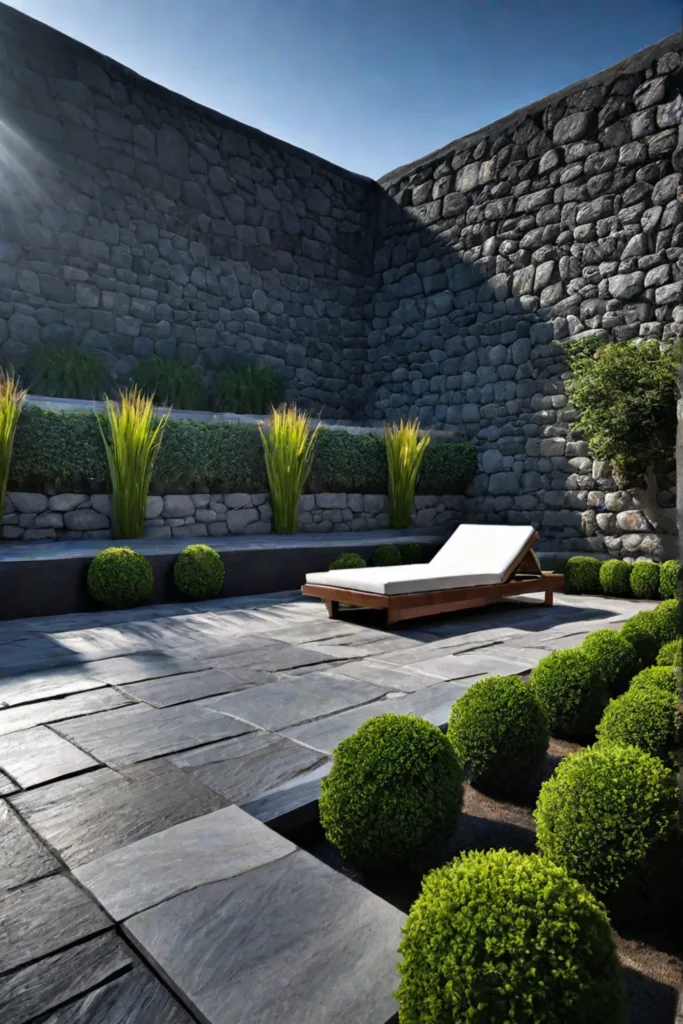
As you embark on your decking project, consider factors like your style, local climate, and environmental impact. Balancing functionality, aesthetics, and sustainability will help you create an outdoor oasis you and your loved ones can enjoy for years.
So, what are you waiting for? Start planning your dream deck today, and get ready to elevate your outdoor living experience to new heights!
